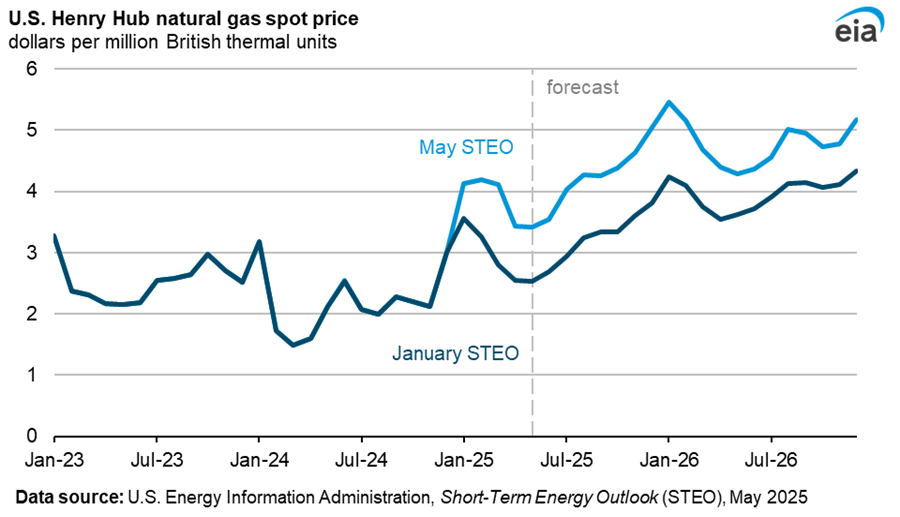Economy, weather, and CO2
U.S. macroeconomics
This month’s forecast assumes that real GDP will grow at an annualized rate of 2.0% in 2025 and 2.2% in 2026, both of which are the same as assumed last month.
The macroeconomic assumptions in the STEO are based on S&P Global’s macroeconomic model. We incorporate STEO energy price forecasts into the model to obtain the final macroeconomic assumptions.
Emissions
We forecast U.S. energy-related CO2 emissions to increase by 1.9% in 2025, followed by a decrease of 1.2% in 2026. This is a change from our November forecast, when we forecast CO2 emissions to decrease by 0.5% in 2026. The lower 2026 emissions estimate in the current forecast is a result of relatively lower anticipated natural gas-fired electricity generation next year.
Our current CO2 emissions forecast for 2025 and 2026 is slightly higher than our initial January 2025 estimates. We expect total CO2 emissions in 2025 and 2026 to be 1.9% and 0.9% higher, respectively, than our January 2025 outlook because coal-fired electricity generation was higher than we expected due to additional electricity demand and natural gas prices. We also now forecast CO2 emissions from natural gas to be higher in both 2025 and 2026 compared with our January forecast. Relative increases in 2025 natural gas emissions are a result of higher natural gas consumption across all sectors except electric power, most notably for industrial use and building space heating in the first quarter. Emissions increases in 2026 are associated with relatively higher natural gas-fired electricity generation, associated with rising electricity demand for data centers and cryptocurrency mining. CO2 emissions from petroleum products have remained unchanged, overall, relative to our January forecast.
Weather
Based on current forecasts and data from the National Oceanic and Atmospheric Administration, we expect a colder-than-average December, with 765 heating degree days (HDDs) across the United States, 9% more than in December 2024 and 8% more than the 10-year monthly average. Milder weather in the first quarter of 2026 (1Q26) more than offsets the cooler start to the winter in 4Q25. As a result, with a total of 3,194 HDDs overall, we expect the 2025–2026 winter heating season (November—March) will be milder than both last winter (1% fewer HDDs) and the previous 10-year winter average (1% fewer HDDs).

